Blackaton Down
Downs, Moorland in Devon Teignbridge
England
Blackaton Down
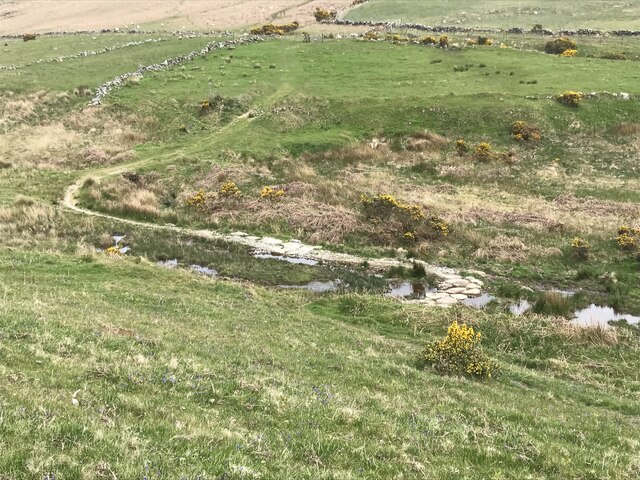
Blackaton Down is a prominent geographical feature located in Devon, England. It is part of a larger area known as Dartmoor National Park, which is renowned for its stunning natural beauty and diverse wildlife. Blackaton Down itself is a large expanse of moorland, characterized by its rolling hills, rocky outcrops, and vast stretches of open grassland.
The area is rich in history, with evidence of human activity dating back thousands of years. The remnants of ancient settlements, stone circles, and burial mounds can be found throughout the moorland, offering a glimpse into the region's past.
Blackaton Down is a popular destination for outdoor enthusiasts, attracting hikers, cyclists, and nature lovers from far and wide. The varied terrain and breathtaking vistas make it an ideal location for exploring and soaking in the natural beauty.
Visitors can expect to encounter a wide range of wildlife while exploring Blackaton Down. Dartmoor ponies, sheep, and cattle can often be seen grazing in the grassland, while birds of prey, such as buzzards and kestrels, soar overhead. The moorland is also home to numerous species of flora and fauna, including heather, gorse, and rare orchids.
Overall, Blackaton Down offers a unique and captivating experience for those seeking to immerse themselves in the natural wonders of Dartmoor National Park. Its rugged beauty, ancient history, and abundant wildlife make it a must-visit destination for nature enthusiasts and history buffs alike.
If you have any feedback on the listing, please let us know in the comments section below.
Blackaton Down Images
Images are sourced within 2km of 50.591323/-3.8353069 or Grid Reference SX7078. Thanks to Geograph Open Source API. All images are credited.
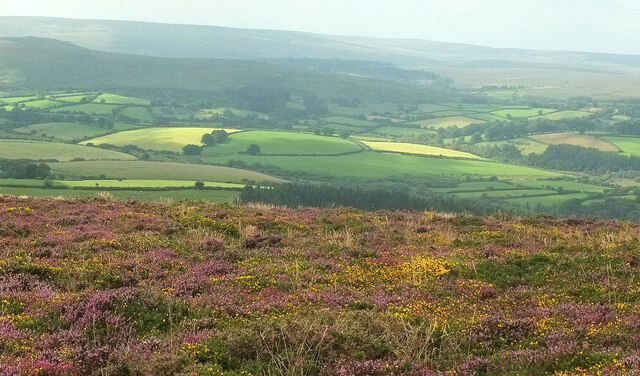
![Valley north of Challacombe Challacombe is a farm that represents all that remains of a once much more extensive village. Settlements in the area around go back to the Bronze Age but it was busiest in medieval times when the strip or lynchet farming system was used, and the 19th century (up to 1927) when there were operational tin mines nearby. Most of the buildings are now in ruins.
The land is now part of the Duchy of Cornwall estate; in 2006 it won Silver prize in the Duke&#039;s Habitat Award which is &quot;to encourage and recognise good conservation practices within farm management.&quot; Min Cullum of Challacombe won it by &quot;developing the varied habitats on her farm which include unusual species such as wax caps and bog hoverfly.&quot; The farmer allows free access to anyone who wants to study the wildlife and archaeology of the farm.
[NB there are at least three villages in Devon called Challacombe, this description relates to the one near Widecombe-in-the-Moor].](https://s3.geograph.org.uk/geophotos/05/12/18/5121899_14fc8e16.jpg)
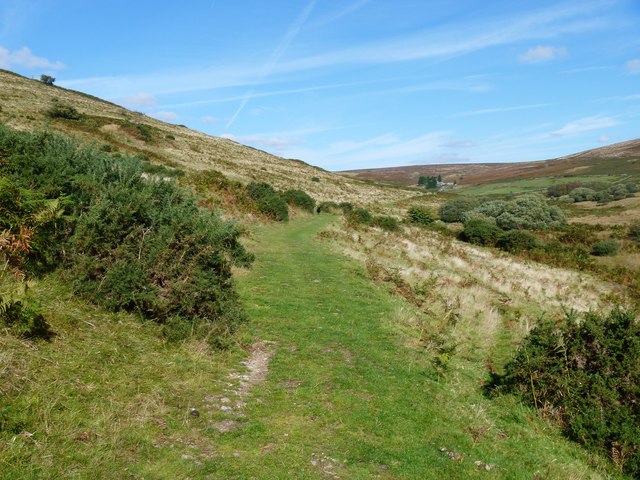
![Two tracks meeting near Challacombe Farm Challacombe is a farm that represents all that remains of a once much more extensive village. Settlements in the area around go back to the Bronze Age but it was busiest in medieval times when the strip or lynchet farming system was used, and the 19th century (up to 1927) when there were operational tin mines nearby. Most of the buildings are now in ruins.
The land is now part of the Duchy of Cornwall estate; in 2006 it won Silver prize in the Duke&#039;s Habitat Award which is &quot;to encourage and recognise good conservation practices within farm management.&quot; Min Cullum of Challacombe won it by &quot;developing the varied habitats on her farm which include unusual species such as wax caps and bog hoverfly.&quot; The farmer allows free access to anyone who wants to study the wildlife and archaeology of the farm.
[NB there are at least three villages in Devon called Challacombe, this description relates to the one near Widecombe-in-the-Moor].](https://s1.geograph.org.uk/geophotos/05/12/18/5121841_76d77814.jpg)
![Pond at Challacombe Farm Challacombe is a farm that represents all that remains of a once much more extensive village. Settlements in the area around go back to the Bronze Age but it was busiest in medieval times when the strip or lynchet farming system was used, and the 19th century (up to 1927) when there were operational tin mines nearby. Most of the buildings are now in ruins.
The land is now part of the Duchy of Cornwall estate; in 2006 it won Silver prize in the Duke&#039;s Habitat Award which is &quot;to encourage and recognise good conservation practices within farm management.&quot; Min Cullum of Challacombe won it by &quot;developing the varied habitats on her farm which include unusual species such as wax caps and bog hoverfly.&quot; The farmer allows free access to anyone who wants to study the wildlife and archaeology of the farm.
[NB there are at least three villages in Devon called Challacombe, this description relates to the one near Widecombe-in-the-Moor].](https://s2.geograph.org.uk/geophotos/05/12/18/5121846_aea4efbb.jpg)
![Information board about Challacombe Medieval Village Challacombe is a farm that represents all that remains of a once much more extensive village. Settlements in the area around go back to the Bronze Age but it was busiest in medieval times when the strip or lynchet farming system was used, and the 19th century (up to 1927) when there were operational tin mines nearby. Most of the buildings are now in ruins.
The land is now part of the Duchy of Cornwall estate; in 2006 it won Silver prize in the Duke&#039;s Habitat Award which is &quot;to encourage and recognise good conservation practices within farm management.&quot; Min Cullum of Challacombe won it by &quot;developing the varied habitats on her farm which include unusual species such as wax caps and bog hoverfly.&quot; The farmer allows free access to anyone who wants to study the wildlife and archaeology of the farm.
[NB there are at least three villages in Devon called Challacombe, this description relates to the one near Widecombe-in-the-Moor].](https://s2.geograph.org.uk/geophotos/05/12/18/5121850_ce820412.jpg)
![Ruined building at Challacombe Medieval Village Challacombe is a farm that represents all that remains of a once much more extensive village. Settlements in the area around go back to the Bronze Age but it was busiest in medieval times when the strip or lynchet farming system was used, and the 19th century (up to 1927) when there were operational tin mines nearby. Most of the buildings are now in ruins.
The land is now part of the Duchy of Cornwall estate; in 2006 it won Silver prize in the Duke&#039;s Habitat Award which is &quot;to encourage and recognise good conservation practices within farm management.&quot; Min Cullum of Challacombe won it by &quot;developing the varied habitats on her farm which include unusual species such as wax caps and bog hoverfly.&quot; The farmer allows free access to anyone who wants to study the wildlife and archaeology of the farm.
[NB there are at least three villages in Devon called Challacombe, this description relates to the one near Widecombe-in-the-Moor].](https://s0.geograph.org.uk/geophotos/05/12/18/5121852_445bffde.jpg)
![Granite walls for a field at Challacombe Farm Challacombe is a farm that represents all that remains of a once much more extensive village. Settlements in the area around go back to the Bronze Age but it was busiest in medieval times when the strip or lynchet farming system was used, and the 19th century (up to 1927) when there were operational tin mines nearby. Most of the buildings are now in ruins.
The land is now part of the Duchy of Cornwall estate; in 2006 it won Silver prize in the Duke&#039;s Habitat Award which is &quot;to encourage and recognise good conservation practices within farm management.&quot; Min Cullum of Challacombe won it by &quot;developing the varied habitats on her farm which include unusual species such as wax caps and bog hoverfly.&quot; The farmer allows free access to anyone who wants to study the wildlife and archaeology of the farm.
[NB there are at least three villages in Devon called Challacombe, this description relates to the one near Widecombe-in-the-Moor].](https://s1.geograph.org.uk/geophotos/05/12/18/5121861_aac8d248.jpg)
Blackaton Down is located at Grid Ref: SX7078 (Lat: 50.591323, Lng: -3.8353069)
Administrative County: Devon
District: Teignbridge
Police Authority: Devon and Cornwall
What 3 Words
///onto.expiring.enthused. Near Moretonhampstead, Devon
Nearby Locations
Related Wikis
The Great Thunderstorm
The Great Thunderstorm of Widecombe-in-the-Moor in Dartmoor, Kingdom of England, took place on Sunday, 21 October 1638, when the church of St Pancras was...
Church of Saint Pancras, Widecombe-in-the-Moor
The Church of Saint Pancras is a Church of England church in Widecombe-in-the-Moor, Devon, England. It is also known as the Cathedral of the Moor. The...
Widecombe in the Moor
Widecombe in the Moor () is a village and large civil parish in Dartmoor National Park in Devon, England. Its church is known as the Cathedral of the Moors...
Grimspound
Grimspound is a late Bronze Age settlement, situated on Dartmoor in Devon, England. It consists of a set of 24 hut circles surrounded by a low stone wall...
Have you been to Blackaton Down?
Leave your review of Blackaton Down below (or comments, questions and feedback).
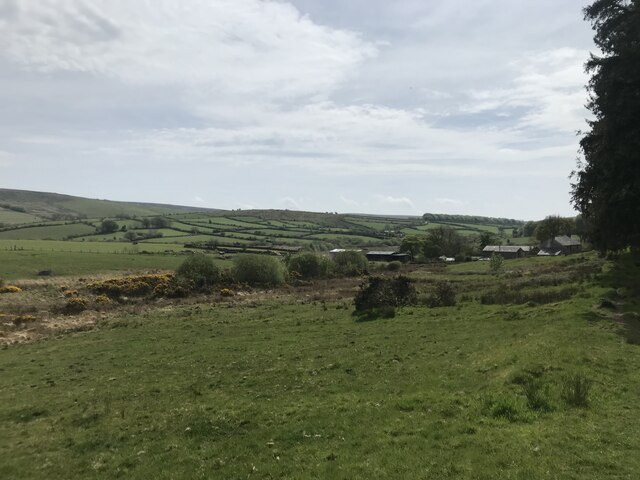
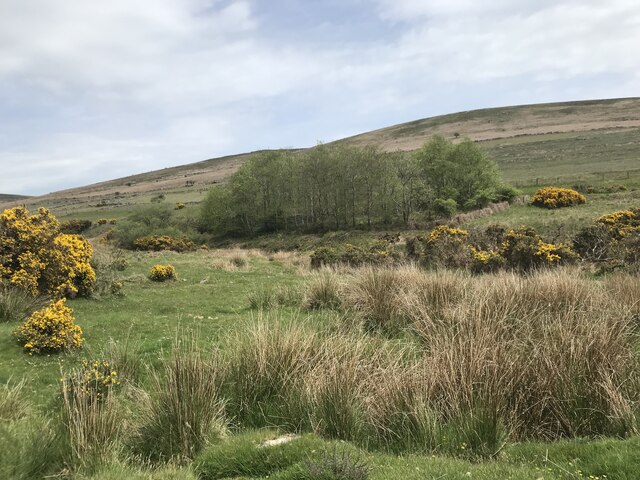
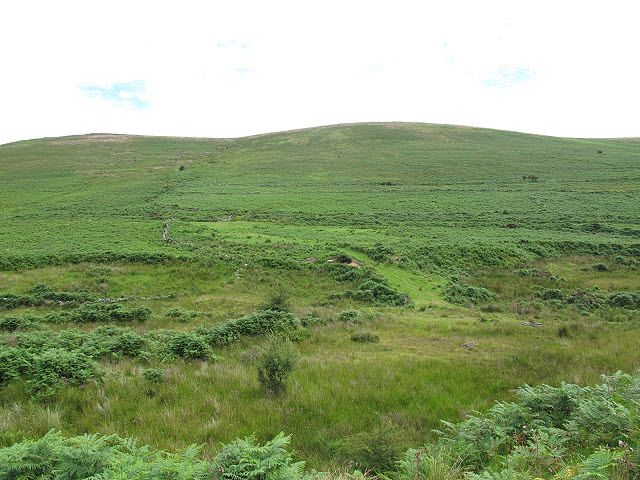
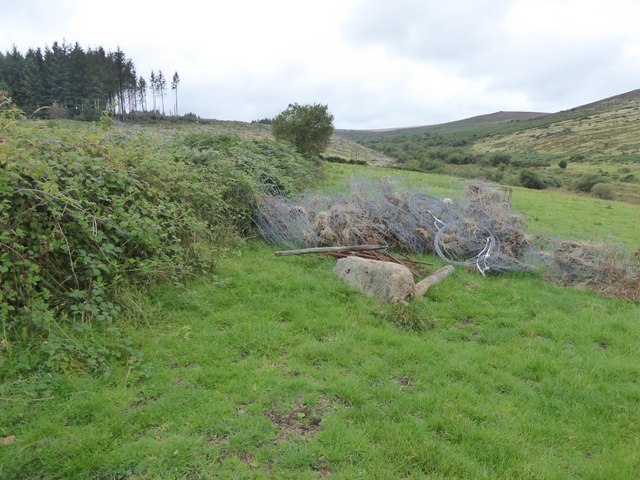
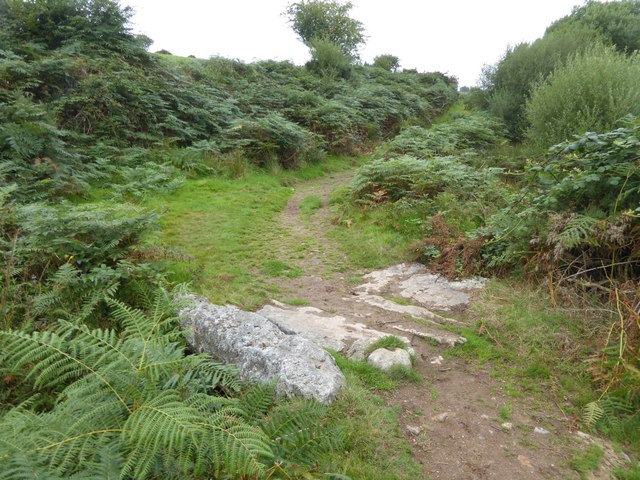
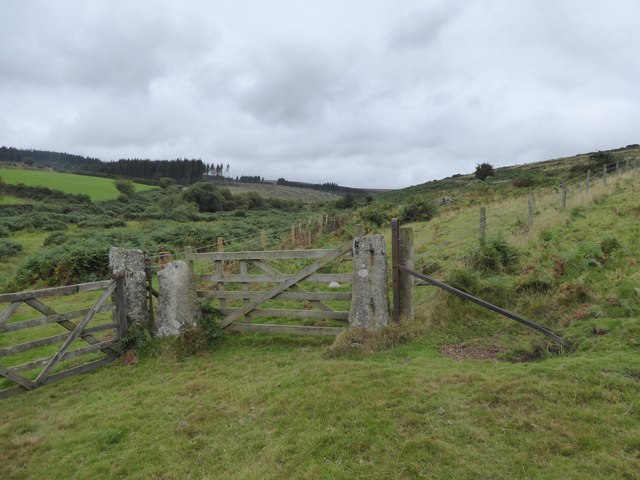
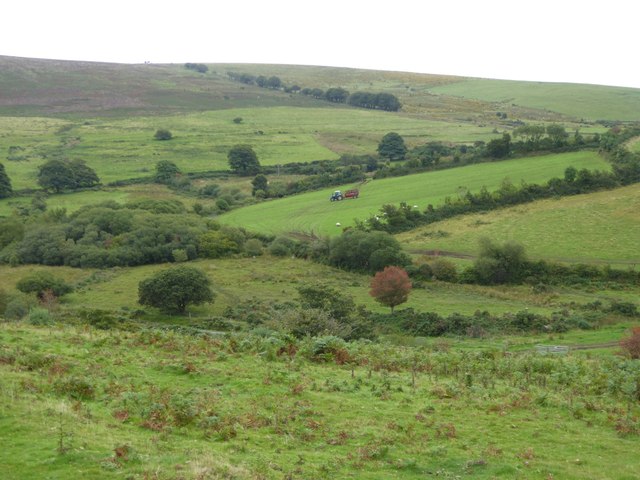
![Four ways to go [1] Three bridleways and a footpath meet at this point. The footpath runs up the clearing (in front of the car) and heads, through the forest, to the minor road near Runnage Farm.](https://s2.geograph.org.uk/geophotos/05/93/47/5934706_c5756d90.jpg)
![Four ways to go [2] Three bridleways and a footpath meet at this point. This bridleway runs to the minor road along the access track to Soussons Farm.](https://s0.geograph.org.uk/geophotos/05/93/47/5934708_e9fbb52f.jpg)



